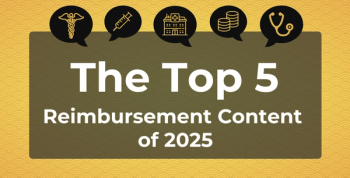
Changing Stop Loss Formula Can Drive Interest in Risk-Based Models
There is a need for a new stop loss formula that ensures a level playing field and motivates accountable care organizations.
As we look ahead, the future of risk-based models in Medicare fee-for-service hangs on the phrase “more than nominal financial risk.”
The current 2-sided risk models expose primary care physicians in an accountable care organizations (ACO) to too much risk too quickly. The stop loss happens only after financial ruin for a physician-led ACO but serves as an effective financial safeguard for large hospital-led ACOs. The purpose of 2-sided risk should be motivational for all ACOs, yet not be financially ruinous for any ACO.
That’s why I propose a new stop loss in the Medicare Shared Savings Program (MSSP) that would make risk motivating for ACOs of all make ups while being financially ruinous to none. Using total cost of care stop loss does not account for the make-up of the ACO organization, which can almost give a large organization a pass on financial risk and expose a small organization to massive financial risk.
Before addressing an appropriate stop loss formula, let’s take a look at how the current 2-sided risk models affect physician-led ACOs and large hospital-led ACOs.
2-Sided Risk Models in MSSP
From the provider perspective, taking on the possibility of losses is taking a gamble. Providers will implement ACO best practices that should generate savings. Providers, rightly in my opinion, view losses as mostly beyond their control and savings as within their control. Because of this they focus on the worst case scenario. Like someone entering a casino only willing to lose $200, they want to know that the gamble won’t financially ruin them.
Yet in today’s MSSP program even the lowest stop loss of 5% losses in the first year of Track 2 could bring a physician-led ACO and its providers to financial ruin in a single year.
For example, let’s explore a 10,000 beneficiary primary care physician-led ACO with a $10,000 benchmark or $100 million in costs. The physicians in that ACO account for $4 million of those costs. It is quite possible for those physicians to get a late start and generate a risk adjusted, regional adjusted savings of only 1% in the first year, but be hit with a 7% headwind due to the lack of risk adjustment and regional inflation. This ACO is now responsible for 40% of $5 million—stop loss of 5% of $100 million—or $2 million. At the practice level an individual physician seeing 300 Medicare patients a year bringing in $120,000 from Medicare could individually owe Medicare under the ACO $60,000. This is half of all the revenue he or she received in Medicare revenue. This formula would put potentially put those practices out of business.
This is a realistic scenario. However, when I talk to physicians they worry about the worst case scenario in year 3 when the stop loss is 10%. In this case, they have to pay $4 million if they generate 10% losses—wiping out their entire annual Medicare revenue despite having the top quality scores needed for the 40% shared losses rate. A catastrophic 100% loss.
You can see why an extra 10% in the shared savings rate is not enticing physician-led ACOs to Track 2 in large numbers.
Why are hospital-led ACOs not flocking to that 10% bump? A hospital-led ACO with specialists might account for $60 million of that Medicare revenue and they have the same stop loss of $2million accounting for a mere 3.33% of their annual Medicare revenue. The worst case scenario only puts 6.67% of their revenue at risk. If the hospital-led ACO won’t take risk under this scenario, of course a physician-led ACO potentially facing financial ruin won’t take risk.
Using Risk to Motivate ACOs
Congress highlighted the use of risk-based models for motivation with the phrase “more than nominal financial risk.” The risk needs to motivate, it needs to be enough to matter, it needs to be more than very small in amount, but more than nominal clearly does not translate into financial ruin.
Rather than a stop loss of a percentage of total costs, I propose a replacement stop loss on the amount an ACO will be liable to Medicare as a percentage of Medicare revenue received by ACO participants. I propose a new stop loss set at 15% of the fee-for-service payments made by CMS to all of the participants in the ACO. This makes the risk greater than what physicians face under the Merit Incentive Payment System, but not ruinous.
Setting risk at this level motivates all ACOs rather than the current situation where a symmetric policy to recoup losses creates massive disparities in financial risk from ACO to ACO. This would not be rewarded with Track 3 like shared savings rates, but rather with Track 2 shared savings rates and qualification as a qualified entity in an alternative payment model minimizing the cost to Medicare. In this new scenario, according to our example the individual physician only has to write Medicare a stiff, but survivable, $18,000 check.
In short, there is a need for a new stop loss formula that ensures a level playing field and that formula should be based on percentage of Medicare revenue received by ACO participants, not a percentage of total costs.
Newsletter
Stay ahead of policy, cost, and value—subscribe to AJMC for expert insights at the intersection of clinical care and health economics.








